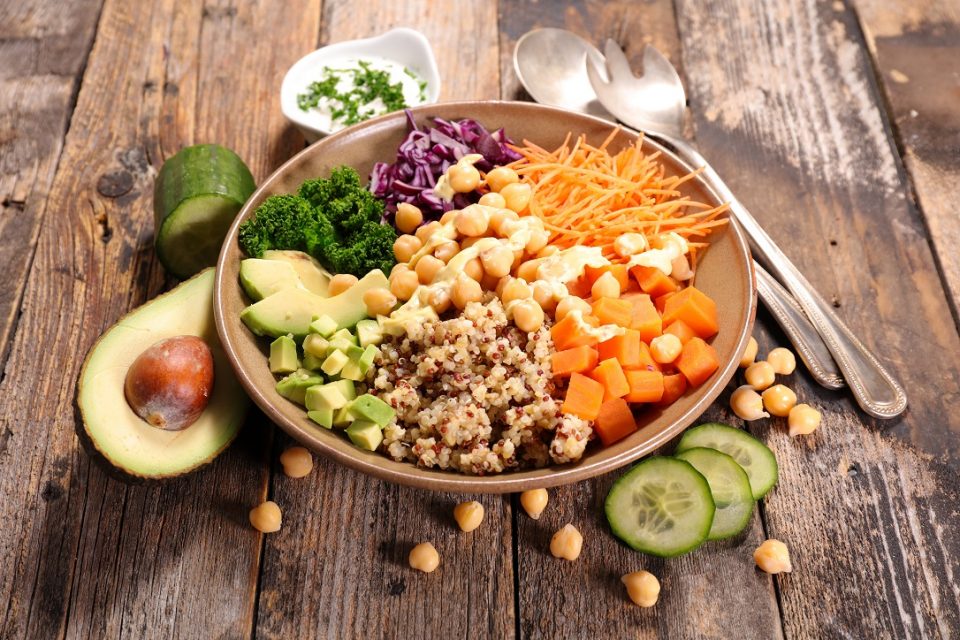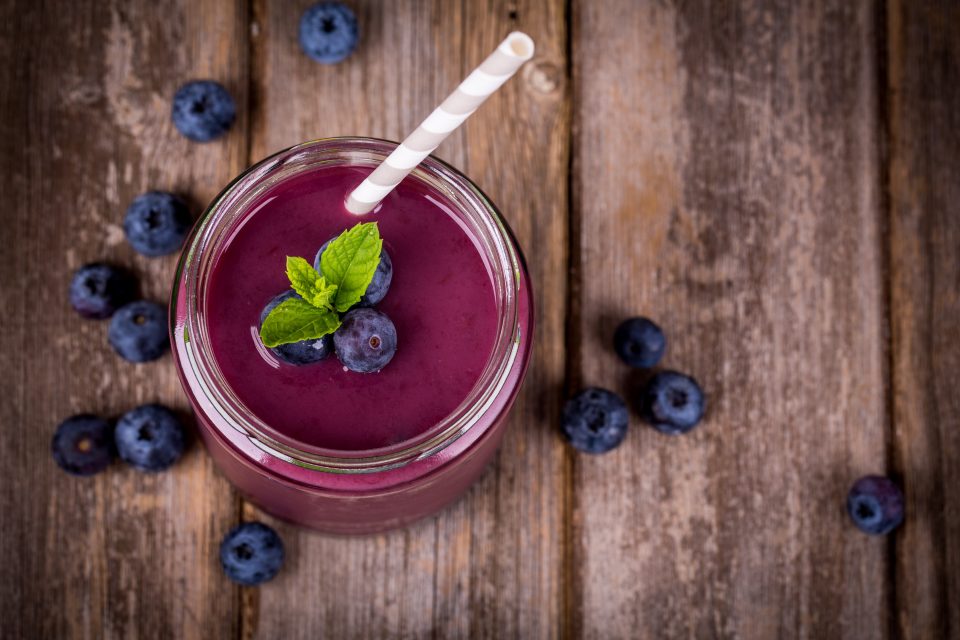![]()
Thank you to Gu Energy Labs for their continued support of this sponsored content.
By Suzanne Lewis, MS, RD, CD
Like most adventure lovers and athletes, I like to keep things as simple as possible during my outdoor physical pursuits. And fueling with quick and convenient sources of nutrition such as sports gels and drinks is usually the go to option. I’ve relied on them in training and racing for years, especially in longer endurance events.
More recently, though, I’ve started fueling with more “real food” during long runs. I’m having fun exploring new ways to gain the benefits of nutrient–rich whole foods, and enjoy more diverse textures, flavors, and colors while eating during training. While sports foods will likely continue to play an important part in my fueling plan, I’m excited to combine my love for real food with trails and outdoor adventure.
In addition to being a “foodie” athlete, I’m also a dietitian. Professionally, I promote the benefits of a “balanced plate” to the general public for reasons such as healthy weight management and prevention of chronic diseases like heart disease and diabetes. During my work, I’ve also found that many athletes can benefit from more balance in our eating and how we approach food and our bodies.

It’s because of these personal and professional experiences that I’m excited to write a series of sports nutrition articles focused on “real food” and balanced eating for athletes. My hope is that these articles will help you, whether you’re a weekend warrior or a professional athlete. The benefits of whole foods can nourish performance and fuel enjoyment of an adventurous life. Follow along and I’d love to hear about your experiences with food and fueling on your own adventures!
To get started, check out this article below on the benefits of probiotic and prebiotic foods and how to get more in today’s diet.
Here’s to a more balanced, nourished and adventurous life,
Nutrition for a Healthy (and Active) Gut: Probiotic and Prebiotic Foods
Traditional diets such as the Mediterranean eating style or other traditional food patterns found throughout the world have been linked to health benefits such as lower levels of chronic diseases and even improved quality of life in older age.
As a modern athlete, traditional eating patterns that include probiotic and prebiotic foods may also offer benefits for sports performance as well as secondary benefits such as improved recovery time, immune function, and maintenance of healthy gastrointestinal function.

These healthy eating patterns are typically plant-based and higher in fruits and vegetables, legumes, and whole grains. They also include fish and seafood and more modest amounts of dairy and lean meats compared to a standard American diet.
In addition to being rich in nutrient-dense plant foods, many traditional eating patterns also include a variety of “gut-friendly” prebiotic and probiotic foods. This is not just about having a slimmer waistline. Eating closer to these dietary patterns is also about nourishing healthy gut bacteria known as the “gut microbiome” or “intestinal microflora”.
Current estimates suggest that gut bacteria are found in numbers comparable to the number of human cells in the body. In fact, there is a growing number of research studies that suggest that the strength and diversity of the gut flora has significant impact on health including support for immune function, weight management, glycemic control, and even potential benefits for mental health, such reduced risk for depression and anxiety.
So what types of foods are gut-friendly? Prebiotics and probiotics are two of the general names for compounds that are beneficial for gut health. Prebiotics are fuel for healthy bacteria, and probiotics are actual live cultures of beneficial bacteria similar to strains found in the human intestinal tract. Even better, when prebiotics and probiotics are consumed they work together to support a healthy gut microbiome.
Prebiotics include a variety of natural non-digestible compounds found in foods such as inulin and fructo-oligosaccharides (FOS). When consumed they pass trough the intestine undigested where beneficial bacteria can then use them in fermentation. For example, fermentation byproducts can support Bifidobacterium a beneficial type of bacteria in the gut.
Given the benefits of prebiotics in supporting gut health, and the benefits of a healthy gut flora for overall health, it makes sense to include prebiotic food sources regularly. Sources of prebiotics include: asparagus, leeks, onions, bananas, whole wheat, garlic, psyllium, and chicory root. Chicory root is a concentrated source of the prebiotic fiber inulin that has a mild flavor and is often added to other food products to boost fiber content. It’s not necessary to consume foods supplemented with inulin though and it’s possible that higher concentrations of inulin could cause GI discomfort for some people. Rather than supplementing, the benefits of inulin and other prebiotics, can be obtained by eating a varied, healthy diet that includes prebiotic foods.
In addition to prebiotics, probiotics are another gut-friendly food component and consist of actual live colonies of beneficial bacteria that when consumed may help support a strong and diverse gut microflora. Probiotic foods were typically included in traditional eating patterns and can now be found in a variety of foods including yogurts and other fermented foods like the dairy beverage kefir, soy products such as miso or tempeh, and vegetable salads like kimchi or sauerkraut.
Increasingly, there are food products containing probiotics such as kombucha, a fermented tea beverage, available in stores today. As these probiotic products grow in popularity it’s helpful to know where to find quality sources of live cultures and how to avoid fads that aren’t worth the money. Given the breadth of this topic, probiotics will be covered further in a future blog post.
For those with digestive or GI issues looking for specific advice on how prebiotic and probiotic foods could help manage or improve symptoms, it’s a good idea to work with a healthcare provider such as a doctor or registered dietitian to review specific needs and create a personalized plan for treatment of health conditions.
Lastly, to support general gut health, try these easy tips to get more prebiotics and probiotics:
- Top yogurt with ½ sliced banana or include banana in a fruit and yogurt smoothie.
- Prep fresh or frozen asparagus by quickly chopping and sautéing in a small amount of olive oil and then enjoy as part of your main meal or as a side dish.
- Use onion and garlic as flavorings for your favorite dishes along with herbs and spices instead of salt.
- Enjoy a healthy and satisfying soup such as potato leek soup.
- Swap white bread or other refined grain products for whole-wheat versions.
- Try baked or grilled tempeh burgers with BBQ sauce as an alternative to traditional burgers.
- Top hot or cold dishes with fermented vegetable salad such as purple cabbage to give color and a tangy bite to a variety of meals.
A version of this article was originally posted by the same author here.
Suzanne Lewis, MS, RDN, CD
Registered Dietitian Nutritionist and Ultrarunner

Suzanne Lewis is a registered dietitian nutritionist with degrees from Brown University and the University of Utah. For the past 10 years, Suzanne has developed and delivered nutrition and lifestyle behavior change coaching programs to help active individuals optimize their performance and overall wellness. She is an avid trail and ultrarunner and is working to complete her yoga teacher certification. You can read more from Suzanne at www.revitalnutrition.com or contact her at suzanne@revitalnutrition.com.


















[…] Real food for trail and ultrarunnning adventures. […]